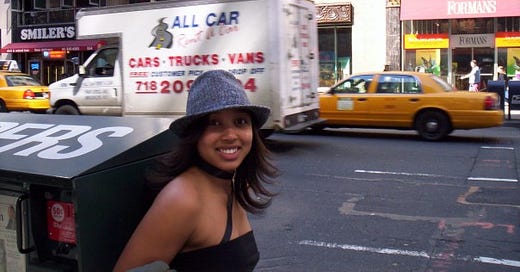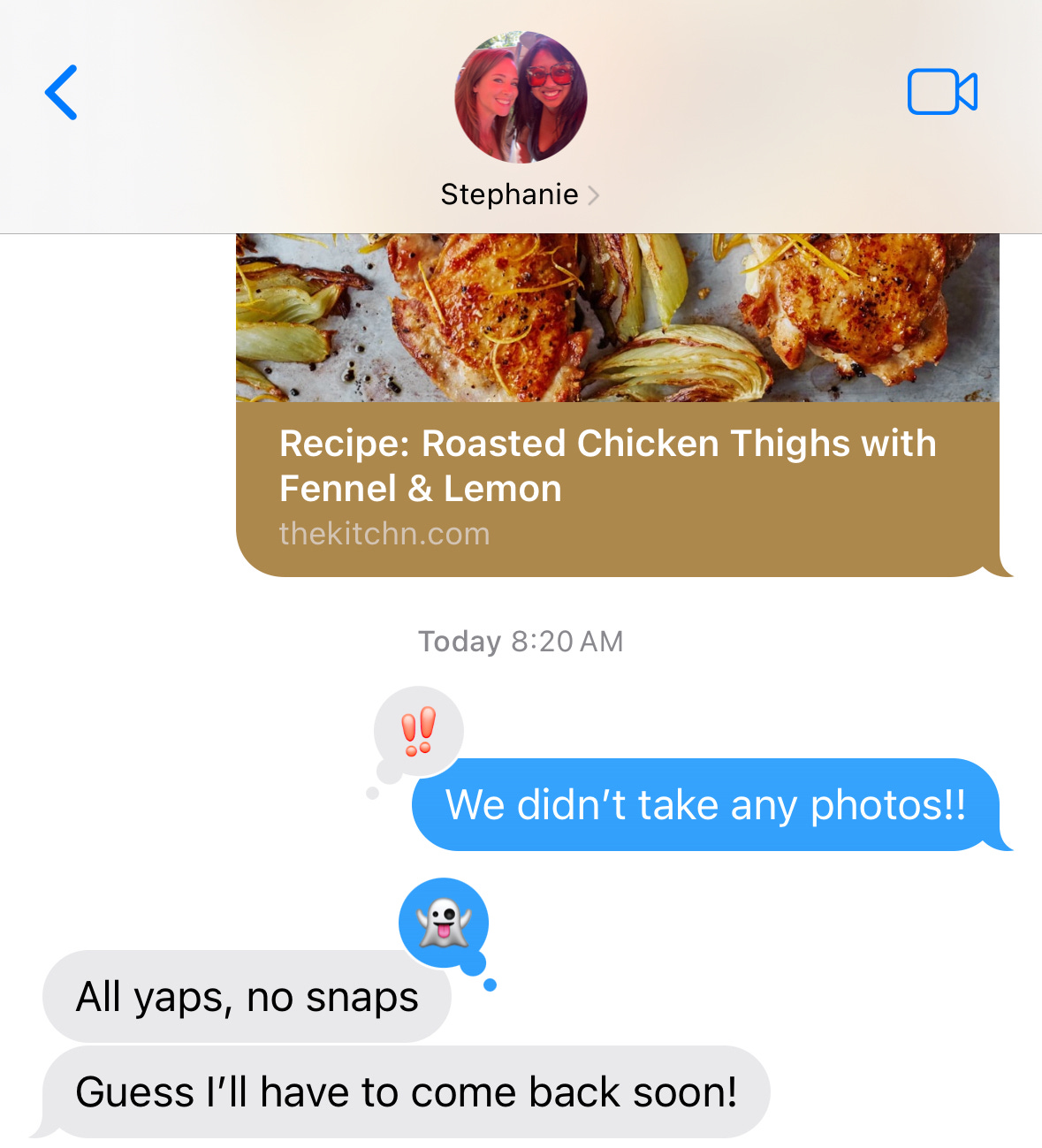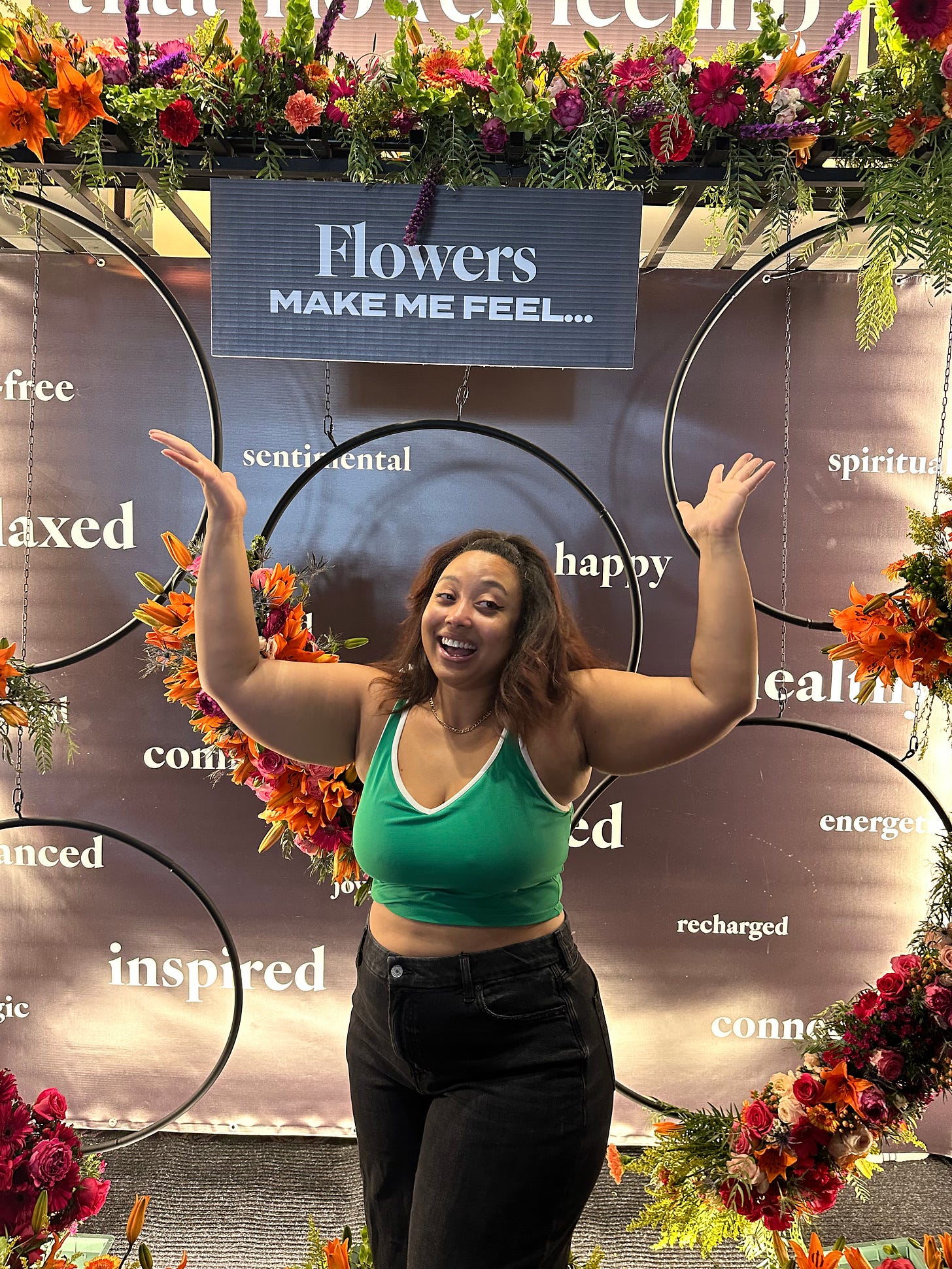Last week’s show-and-tell preamble to the body of the newsletter felt right, so I’m doing it again this week.
This Week’s Reason the Newsletter is Late… Yet Again.
My high school bestie took a short notice work trip to NJ and squeezed in a night with me. I made us dinner — this incredible one mixing bowl/one sheet pan garlic lemon fennel chicken thigh recipe that everyone loves — and then we ambled around the city catching up.
She educated me on the thriller, filler, spiller equation for outstanding plant boxes.
Writer Things
Tomorrow I’ll be the closing keynote yapping with my friend
for the first annual Live event! in NYC. All your nonfiction faves are gonna be there and unfortch, it’s also already sold out (done beeeeen sold out!).I’ll be jogging back up to NYC May 12th to be on a panel at Penguin Random House’s Multicultural Marketing Summit and uh I’m pretty excited that
from the Stacks is going to be on the panel too!Join me on Zoom on May 17th for a deep revisions workshop with the Porch TN — don’t go in with a butter knife when you really need machete!
Poets & Writers invited me to present at a two-day workshop — Mapping the Maze — on getting published. I’m slated for the the second day, May 21st and my very own agent, Kayla Lightner, will be presenting right before me 😍
Relevant Content
Since this week’s missive is about baby’s first mammogram, it’s the perfect time to share about my friend Alex Zaragoza’s new newsletter about having breast cancer. Okay, just realized anyone who doesn’t know Alex might assume it’s gonna be a major bummer delivered to your inbox weekly but 1) Alex is legitimately one of the funniest people I’ve ever met. Like her ability to humor leaves me in awe and 2) She’s really fucking great writer too. Anyways, take a gander if you’re so inclined.

The Big Squeeze
When the doctor comes in to deliver the benign news, I am partially reclined on a bed that tilts up like a poolside deck chair and there is a white cotton hand towel draped over my breasts. Were the atmosphere more la piscine and less medicine, the lighting au natural, the room not darkened aside from a desk lamp and the tube lighting over the hand wash basin, it would be almost as if he were taking my order for something fruity and refreshing rather than catching me up on how my boob’s been misbehaving — in a totally predictable, non-cancerous way that still required a follow up monogram and then a sonogram because the location is hard to image (and I, like seemingly every breast-bearing person I know, have dense breasts, which, inconveniently, are more likely to lead to a missed cancer diagnosis).
It’s wild to me that my breasts, which joined my body later than any other part of it, were causing so much commotion. No one would have described my boobs as ample until I hit my mid-twenties. Up until then, bras were more of an accessory than a necessity.
I have been blessed with a take-notice ass from the age of like 14, so I was never all that pressed about my B cups. Even now, I sometimes lurk on Reddit threads dedicated to “Before” and “After” breast reduction photos wondering if this might be the way out of the near constant logistical task of dealing with delusional clothing designed for smaller breasts when the average set in the U.S. is a 34DD. Especially, if said breasts are essentially a ticking time bomb for cancer!
While I waited for the doctor to enter, a country song played softly from a computer in the corner and a walk clock ticked just audibly, slightly behind the rhythm of the song. I considered that depending on the results of this additional imaging, the woes I walked into this room with would not be the woes I walked out with.
My hoodie and sports bra sat beneath my purse on a chair out of arm’s reach, so there was no iPhone to distract me from my thoughts. I hadn’t put my clothes in the lockers in the waiting area because the directions for the locks seemed involved and I figured if I got bad news, I did not want to be puzzling out an unknown lock situation to be reunited with the attire I arrived in. I did not want to be flustered and teary-eyed and utter “Fuck it” and blitz out of there in my tie-on hospital garment, speed walking the nearly mile back home, breasts jiggling and dressed as an institution escapee.
Conventional writing advice dictates I don’t tell you upfront that I do not have breast cancer. But why emotionally manipulate you, my reader, in that way? The tension isn’t in the diagnosis, it’s in the timeline.
A month earlier, I’d had my first mammogram. A routine procedure, I’d now do annually having turned 40 in January. I accepted the tie-front medical blouse the nurse handed me and dipped into a dressing room to change. When I entered the waiting room, I smile at an older Black woman and tell her, “I like your shirt.” She’s midway through thanking me for the compliment before looking down and realizing I’m joking — we are dressed in identical tops. She shakes her head at my silliness.
The procedures itself wasn’t at all painful. Mostly it was just awkward because I’m short, boobs have a limit to their squishiness and you have a stranger posing your breast for optimal screening. I doubt the entire ordeal took longer than 10 minutes. (Side note: Mammogram machines have come a long way, so try to book yours at a facility with more recent technology to avoid experiencing first-hand the flattened pancake boob stories of yore).
Both of my parents have a whole host of medical issues, so I’m someone who always feels like they’re trying out run the beast of genetics and that every year older I get, the more terrain it gains on me. I might have been more anxious than I needed to be about my first mammogram, but the letter I received a couple of days later just as I was boarding a flight to a literary festival, with a bold red “ABNORMAL” next to my left breast, shook me.
Although my best friend had told me about her experience, her first mammogram also necessitating a follow up screening, and explained that a lot of people get called back in after their first one because essentially what’s happening is setting a baseline — titty mapping, if you will — and it’s often nothing, I was still nervous. Another friend had just gone public about her breast cancer diagnosis following her first mammogram. I’d known to women in my mid-thirties to be diagnosed with breast cancer and one of them passed away less than two years ago. The idea of breast cancer wasn’t just some distant notion for me.
I hated receiving that letter just before I hit the road for three weeks, but when I called to schedule my follow up, I was given a date for after my return without having even mentioned I was out of town. In other words, it seemed important I have it done in a timely manner but that it was not an urgent matter.
On the road, I kept running into other women and nonbinary friends who’d also just had their first mammogram. Yes, they were also being called back. Yes, they also had dense breasts. Yes, the same far to reach, hard to photograph area of their left tit was the cause for the concern. The commonness of the experience comforted and concerned me. I felt like mammograms were playing Duck, Duck, Goose with me and my friends — which one of us would be “It”?
It wasn’t me.
From my poolside positioning, the doctor explained that there were three areas of concern in my left breasts. Something that essentially sounded like a breast fibroid, calcium deposits — he helpfully explained you don’t get those from drinking too much milk 🙃 — and some small benign cysts. And all — again three — of these areas, while concerning are ridiculously common and unlikely to ever evolve into anything else. Still, to be on the safe side, they’d like to see me again in six months, since this was my first mammogram.
Just to make sure nothing changes. (Doc, didn’t you hear? I’m 40. Everything is changing.)






